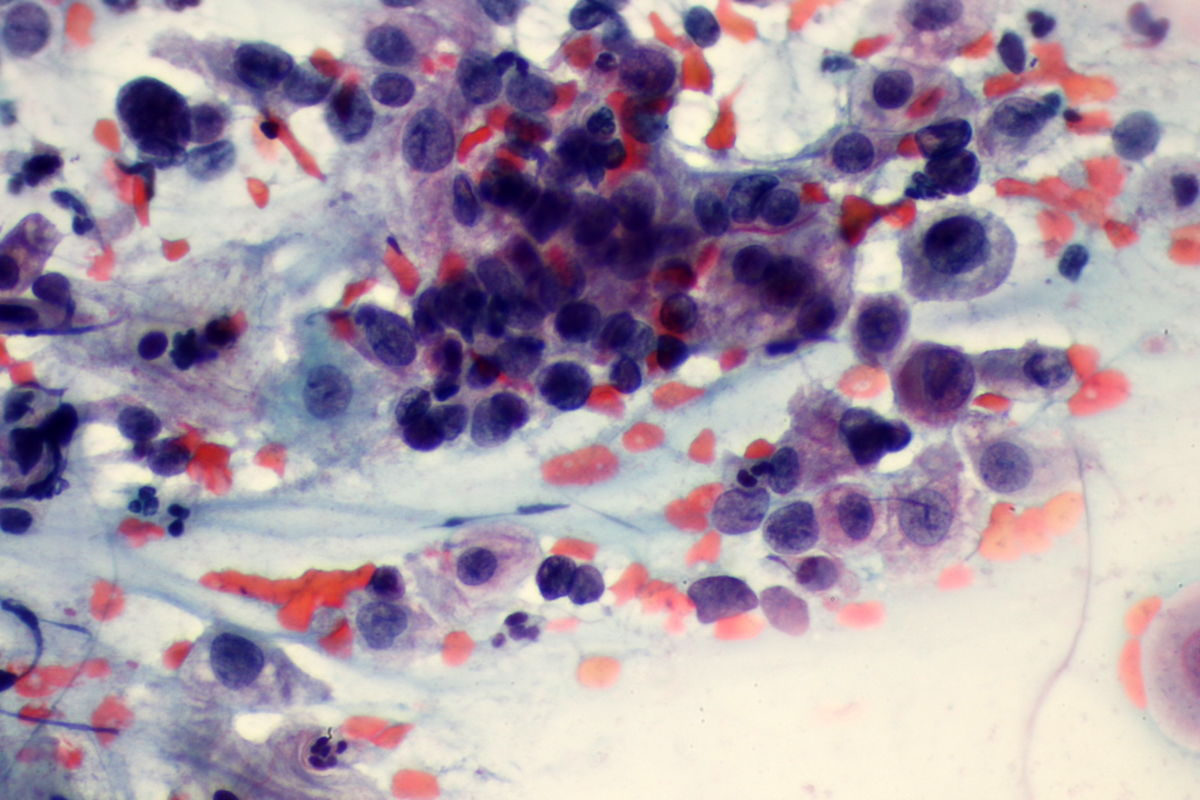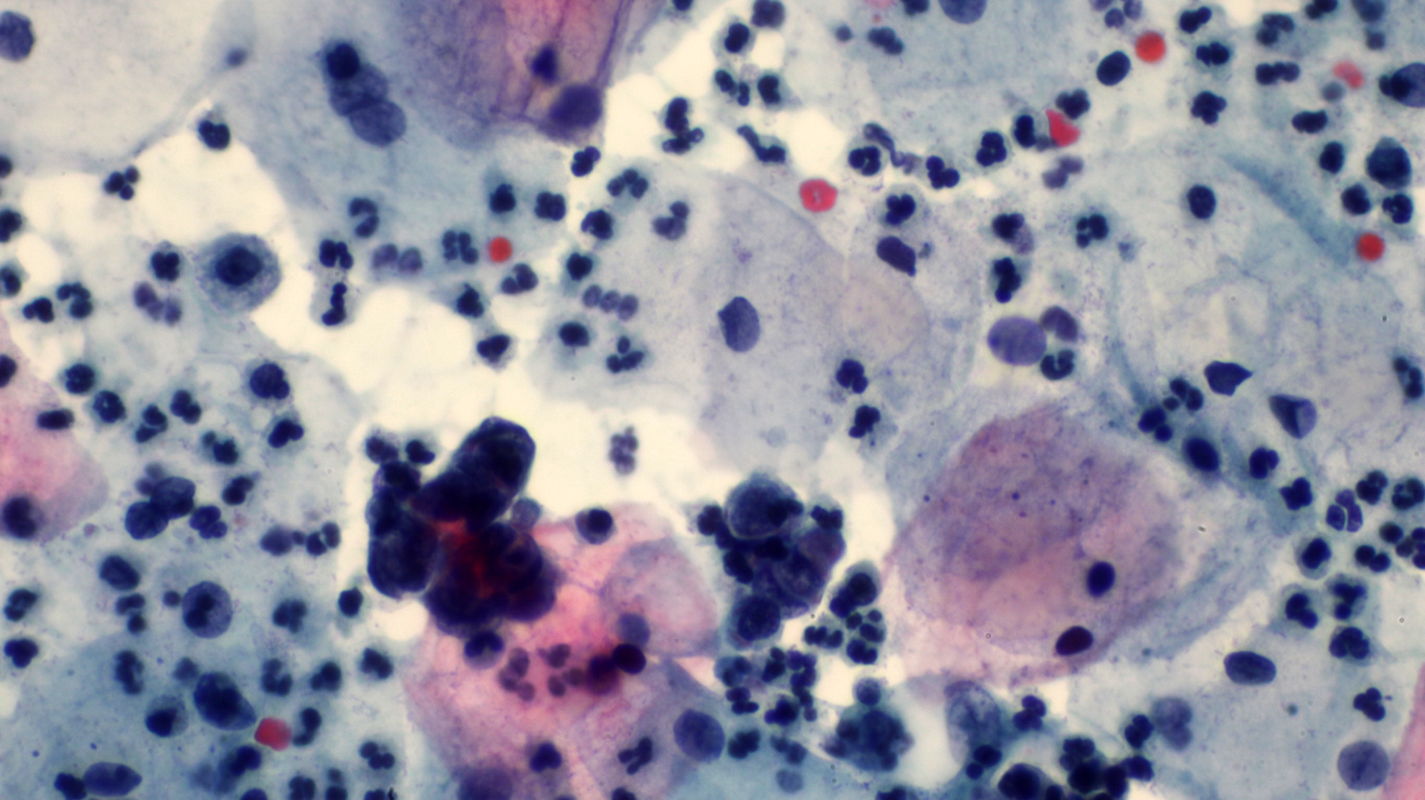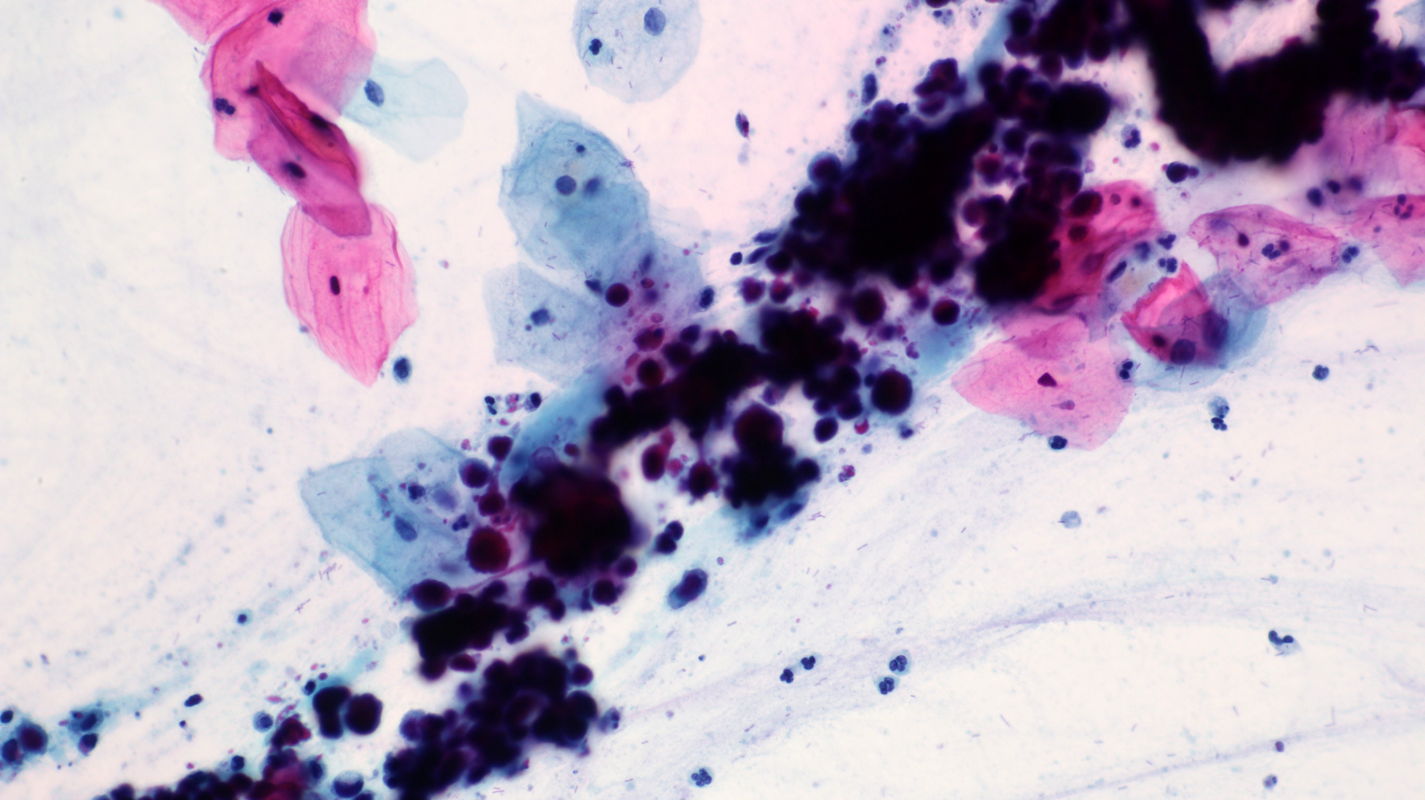Secondary Prevention of Cervical Cancer
Class III – Doubtful or Inconclusive Findings
Class III-p

Example of class III-p:
Eosinophilic and basophilic squamous epithelial cells with a markedly increased nuclear-cytoplasmic ratio in a 45-year-old patient. Colposcopic examination showed an atypical T-zone type 2 with major change and CIN 3 was confirmed on biopsy.
Class III-g

Example of class III-g:
Basophilic glandular epithelial cells of the endocervix with a markedly increased nuclear-cytoplasmic ratio in a 48-year-old patient. Colposcopy showed an atypical T-zone type 2 with major change and adenocarcinoma in situ (AIS) was confirmed on biopsy.
Class III-e

Example of class III-e:
Syncytium of basophilic glandular epithelial cells of the endometrium with a markedly increased nuclear-cytoplasmic ratio in a 52-year-old patient. Office hysteroscopy showed an hyperplastic endometrium and atypical endometrial hyperplasia was confirmed in curettage material.
Class III-x

Example of class III-x:
Syncytium of basophilic glandular epithelial cells in a papillary arrangement with a markedly increased nuclear-cytoplasmic ratio in a 72-year-old patient. Histology showed serous papillary carcinoma of the endometrium in the curettage material. Following surgery disease was staged pT1b pN0 M0.